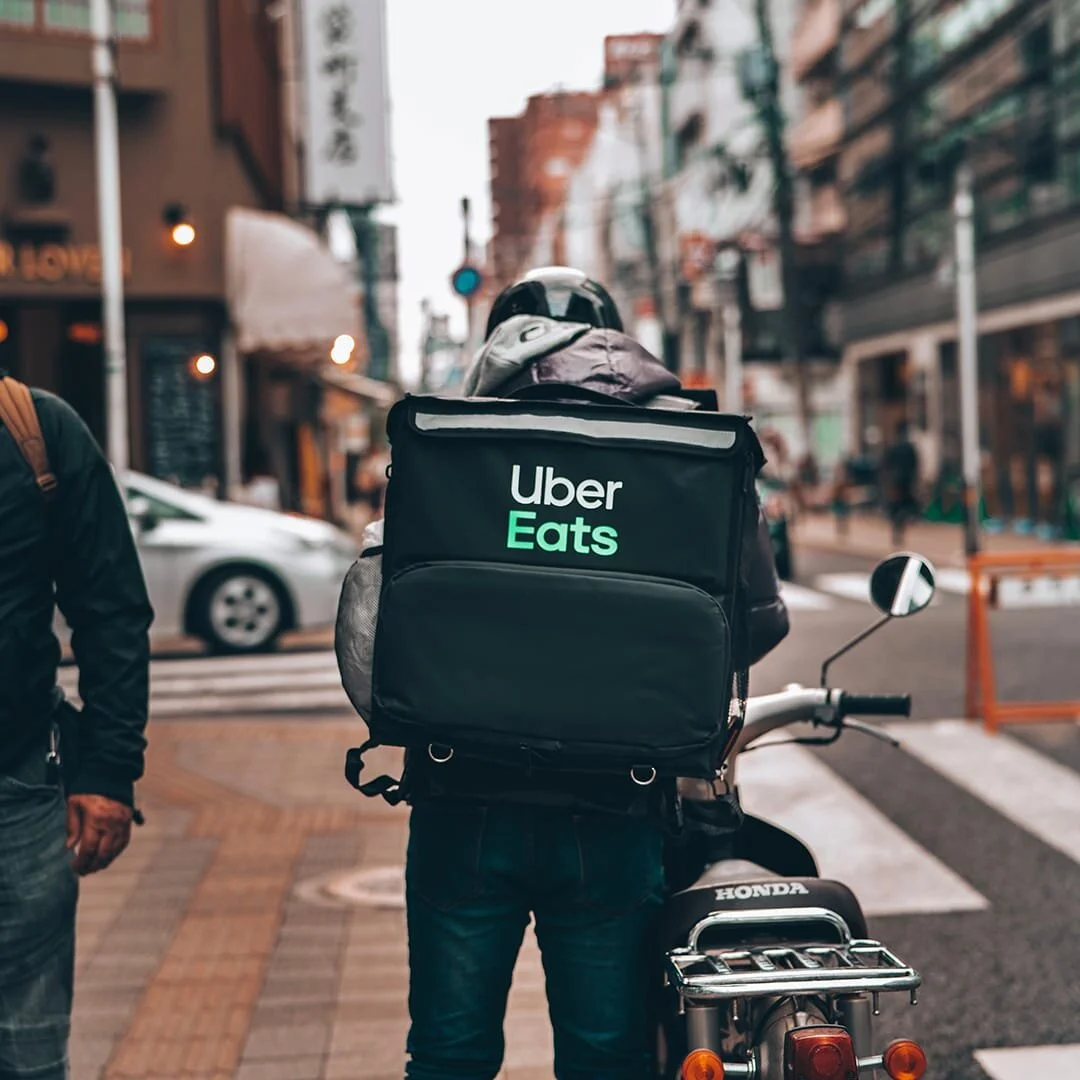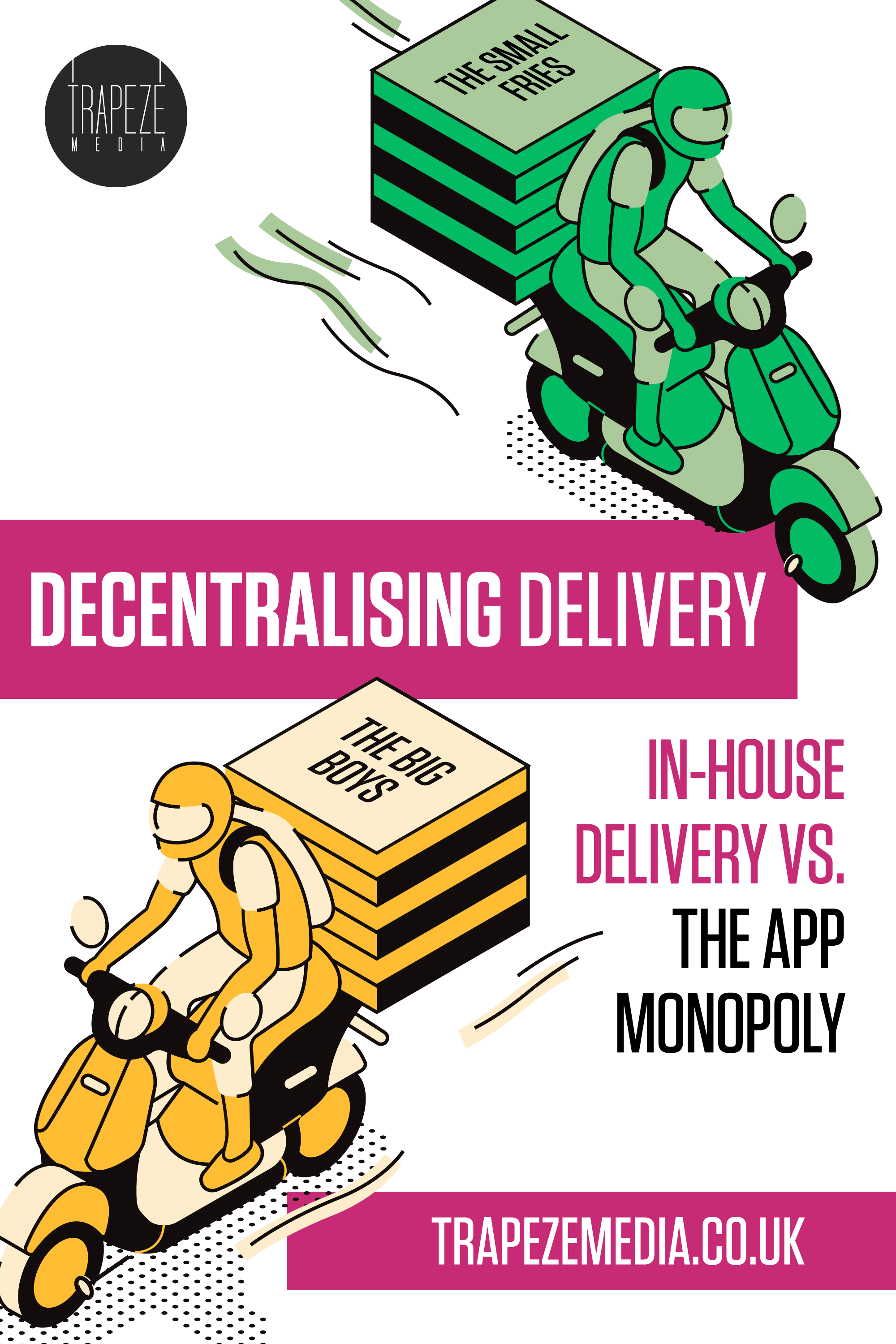Can we decentralise the delivery market, and do we even want to?
Director Kitty Newman gives her take on the delivery sector as it stands at the moment
A very turbulent time in March 2020 led to fast changes for the hospitality sector, and not much opportunity for planning ahead. Wasted produce was a big concern, as was the stability of jobs, finances, and health.
By the time Lockdown 2 came into place, restaurants, bars. and cafés were prepared with ideas and strategies that, three months ago, likely weren’t even on their radar. In the midst of the chaos, there was innovation:
When the government revealed they wouldn’t be continuing free school meals during the holidays, nearly 2,000 venues offered free food, and even riffed on the #EatOutToHelpOut campaign with the #HelpOutWhenSchoolsOut hashtag
QR codes became part and parcel of the dining experience, as contactless ordering became a prevalent must. Integration of QR code scanners into the default camera apps of most modern smartphones in recent years makes this a much cleaner user experience — and much easier to convey on instructional posters!
Teams adapted fast to all kinds of new customer complaints and communications
DIY home kits grew in popularity and brought the restaurant experience to people’s homes
DIY Home Kits
Dirty Bones, who have restaurants in London and Oxford, released their signature Mac Daddy burger and widely-loved Lamb Fries as ‘made-by-you kits’. A brand new e-commerce site, fresh strategies, and built-from-the-ground-up delivery systems were all implemented to support the product in a very short time frame
I tried this kit, and it was incredible. Dirty Bones — a brand known for folding music into its culture and content — even include Spotify playlists in each order, to help set the mood. Other brands like Pizza Pilgrims and SIX by Nico are also doing amazing things in the DIY home kits space.
Home kits are a great way to keep your audience engaged with your brand and — I’m speaking with my digital marketing head on here — the customer journey is 100% trackable from start to finish. You know the who, what, where, and when of every purchase, and can even retarget ads to people who didn’t complete their orders.
Deliveries: The Big Boys vs. The Small Fries
Deliveries were, and are, on the up and up. But the big third-party delivery apps — as life-saving as they’ve been to many businesses this year — aren’t necessarily bringing your restaurant’s in-venue experience to people’s doors. Some of the downsides to using third-party delivery apps include:
The quality of meals being reduced in transit — often caused by delivery drivers juggling multiple deliveries at once for several apps at any one time to make ends meet in an increasingly competitive job
The negative association with poor delivery quality landing with the restaurant, not the courier app
The passion and character of your team being lost as soon as the food leaves your restaurant
Herein lies the problem — or, if we’re being optimistic, the exciting opportunity!
What we’ve seen from our hospitality clients, peers, and friends is deeply exciting to me, and I can see how digital marketing is becoming more and more powerful a tool in the hands of forward-thinking hospitality businesses who are pushing through all the challenges 2020 has presented.
I’ve always wanted the hospitality sector to have more of an online presence. Typically, the only action that takes place online for restaurants is the bookings, and even this is often run via a third party, meaning no start-to-finish tracking.
The benefits of having all actions take place on your own site — without directing people to a third-party booking engine or a third-party delivery site — is: you can capture data and insights on your audience from their entry point onto your site all the way through to their final purchase.
Decentralising deliveries
Deliveroo don't openly disclose their commission rates online, but I know they charge up to 30%, with average orders being 20–25%. If you're working with Deliveroo, you will of course know what you're paying them, plus your initial set up fees.
Uber Eats = up to 30%
Just Eat = 14% + VAT
I'm not against any of these brands. I think they're important at the moment, but what I'd like to do is explore other ways of approaching the delivery service industry.
The way I see it, there’s too much power in the hands of these near-monopolistic app-based platforms, and we have an amazing opportunity to decentralise.
The biggest publicity campaign there’s ever been for the hospitality sector is taking place right now. The country is very aware that the sector has been hit hard, along with its sister industry: events.
Look at this ad from Burger King. It’s definitely a unique moment in time when a huge brand like this encourages you to eat anywhere you can. It's also amazing publicity for BK, so I fully admire and applaud this campaign for so many reasons.
Some of the potential challenges as I see it are:
Increased localised competition
Increased costs to facilitate and market deliveries
But on the flipside:
Will profit margins be improved enough to cover the costs of in-house delivery systems?
Can we create an infrastructure that supports local delivery while also providing more jobs — a delivery co-operative, maybe?
Now we're getting used to the idea that deliveries need to be a fully-integrated part of the hospitality business model, let’s see how we can work together to decentralise the market.
Nobody’s winning
Apps like Uber Eats and Deliveroo aren’t invincible. Uber are valued well into the tens of billions, but have never turned a profit. They sold their self-driving car and flying taxi subsidiaries last year, and are buying up other delivery services to remain competitive.
Uber just acquired alcohol delivery app Drizly (February 2021), mere months after snapping up Postmates. Deliveroo only started escaping the red with their first profits in the second and third quarters of 2020. Would that have been the case in a world with no pandemic or lockdowns? Likely not.
These third-party delivery services have been a blessing and a curse. Restaurants which needed to quickly pivot to delivery when COVID hit could do so quickly, but have to pay crushing commissions. Delivery apps are struggling to turn a profit and large powerful food chains are haggling down commissions, so smaller restaurants lose a bigger cut per order. Thousands of riders have ‘jobs’, but often earn less than the livable wage.
I loved this article — 'Gulp! The Secret Economics of Food Delivery' — from Jonathan Nunn in The Economist, who spent some time as a delivery rider himself. He spoke with the owner of Dishoom about Deliveroo’s dark kitchen model. A dark kitchen (or ‘ghost kitchen’) is a space shared by several food brands — restaurant or non-restaurant. Kitchen and delivery facilities without the need for a full premises? Perfect for right now.
But the same problems keep raising their heads. Deliveroo will pocket up to 40% per order from some restaurants, which puts smaller independent brands in an almost impossible spot. The delivery apps have no doubt saved countless businesses, but they’ve done so in a very ‘rock and a hard place’ kind of way.
The other big issue that affects food brands in dark kitchens as well as restaurants using apps: a lack of access to customer data. Deliveroo and Uber Eats can retarget customers to bring them back time and time again. The restaurant should have this opportunity too. It’s something Deliveroo could provide for restaurant partners — what a great selling point that’d be!
The world’s not an ideal place, though, so here are some key things restaurants should be doing to push their marketing strategy forward in the meantime:
Brand identity and an engaging personality: after the quality of the food and the service, this is all a restaurant is left with under the dark kitchen model
Data capture: email sign-ups, website analytics, etc.
E-Commerce: home kits with healthy margins, branded merch, third-party products like seasonings and sauces
Local partnerships: collaborating with other food brands to exchange audiences, and nurturing a ‘local scene’
Bringing the venue experience to the customer: innovative ideas that will make the brand memorable, and inspire customers to visit any physical space a kitchen might have post-pandemic
I’m carrying out interviews with businesses who have set up their own delivery services to document the challenges they’re encountering, and I’m looking for more businesses to speak to and to be part of this discovery process. Please reach out if you’d like to explore this topic with me.
— Kitty







